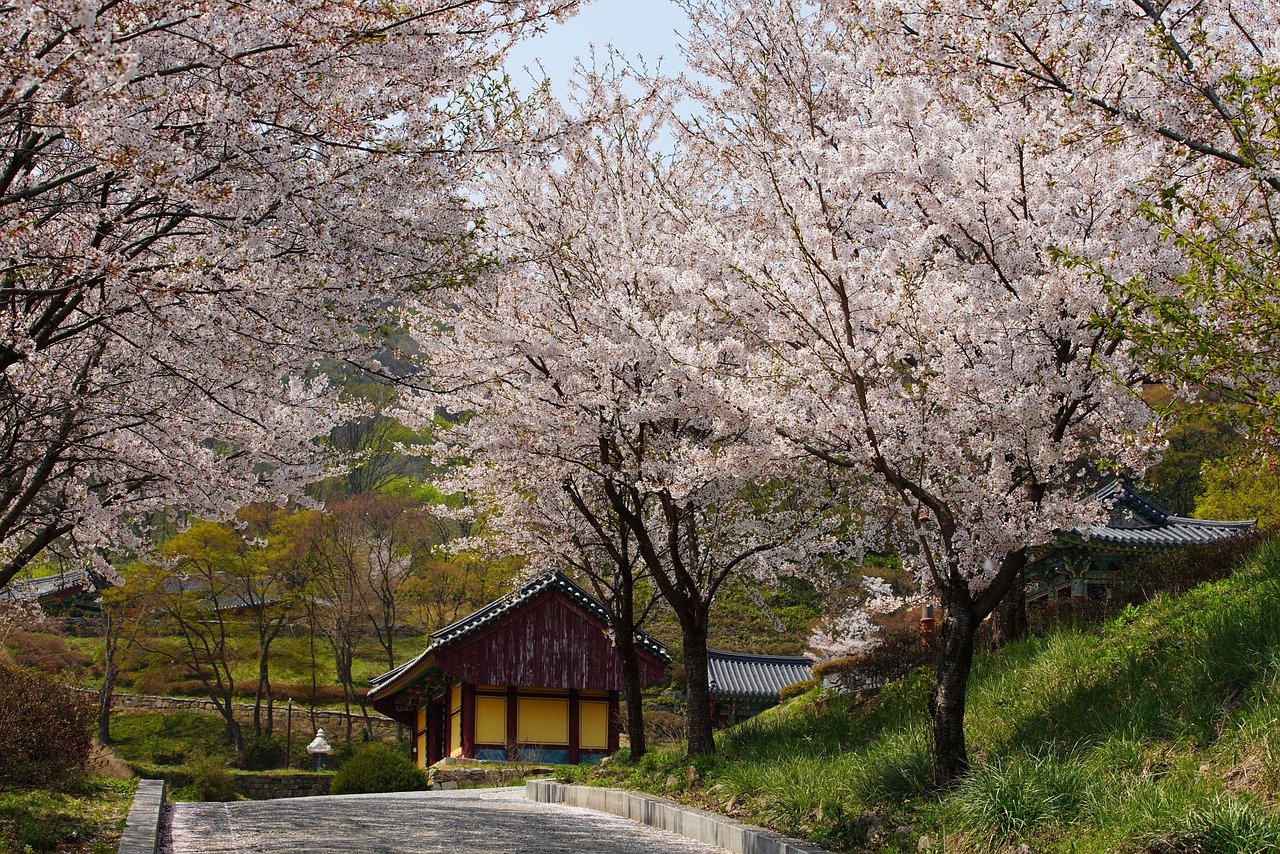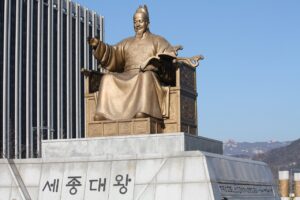봄이 왔어요! bom-i wasseoyo! Spring is here!
At long last, 추운 날씨 chu-un nalsshi the cold weather and 낮이 짧은 날들 naj-i jjalbeun naldeul the short days of winter are over, at least in the northern hemisphere. Even if other things going on in the world are not very happy, at least we have the spring to enjoy. And that means 날씨가 따뜻해요 nalsshi-ga ttatteut’haeyo the weather is warmer, 낮이 더 길어져요 naj-i deo gileojyeoyo the days are longer, 햇빛이 더 있어요 haet’bich-i deo isseoyo there’s more sunlight, and of course 아름다운 꽃들이 있어요 aleumdaun kkot’deul-i isseoyo there are beautiful flowers. So, let’s cover some happy, bright vocabulary to help you talk about the spring in Korean.
날이 더 따뜻해요 nal-i deo ttatteut’haeyo The days are warmer
The best thing about spring is probably 좋을 날씨 jo-eun nalsshi the nice weather and 햇살 haet’sal the sunshine. Hopefully you’ll find plenty of occasions to say:
- 날씨가 좋아요.
nalsshi-ga jo-ayo.
The weather is nice. - 오늘은 따뜻해요.
oneul-eun ttatteut’haeyo.
It’s warm today. - 오늘은 화창해요.
oneul-eun hwachanghaeyo.
It’s sunny today. - 하늘이 푸르다.
haneul-i puleuda.
The sky is blue. - 해가 반짝여요.
hae-ga banjjagyeoyo.
The sun is shining.
낮이 더 길어요 naj-i deo gileoyo The days are longer
Every year 우리는 시계를 앞당기다 uri-neun shigye-reul apdanggida we turn the clocks ahead and we immediately have an hour more of sunlight. Which of course means:
- 밤이 더 짧아요.
bam-i deo jjalbayo.
The night is shorter. - 해가 늦게 져요.
hae-ga neut’gge jyeoyo.
The sun sets later. - 해가 일찍 떠요.
hae-ga iljjig tteoyo.
The sun rises earlier.
Even if that last one isn’t technically true, it seems that way. And spring is as much an attitude as anything else. Speaking of which…
(나는) 행복해요! (na-neun) haengboghaeyo! I am happy!
It’s no exaggeration that many people’s moods change in the spring. Everything is brighter and happier, so you might want to say:
- 오늘 기분이 좋아요.
oneul gibun-i jo-ayo.
I’m in a good mood today. - 봄이라서 행복해요.
bom-ilaseo haengboghaeyo.
I’m happy because it’s spring. - 에너지가 더 있어요.
eneoji-ga deo isseoyo.
I have more energy. - 기분이 대단히 좋아요.
gibun-i daedanhi jo-ayo
I feel great.
자연 jayeon nature
How about 자연 jayeon nature? In the spring you probably want to talk about 새 sae the birds, 꽃 kkot’ the flowers, and 푸른 잎 puleun ip the green leaves.
- 꽃이 피고 있어요.
kkoch-i pigo isseoyo.
The flowers are blooming. - 잎이 나고 있어요.
ip-i nago isseoyo.
Leaves are budding. - 새들이 노래하고 있어요.
saedeul-i nolaehago iss-eoyo.
The birds are singing. - 공기가 신선해요.
gonggi-ga shinseonhaeyo.
The air is fresh.
Even if things are difficult this year, thinking about spring will hopefully bring 미소 miso a smile to your face.
Learn Korean with the Language Garage
Check out our other posts on Korean language, culture, and more. And if you’re looking for convenient and affordable live Korean lessons with a real teacher, check out The Language Garage. Our lessons are given online in a virtual classroom, so it doesn’t matter where you live or work – we can come to you. And we have flexible options, with a free trial so that you can decide if there’s a fit. Check us out!
Image by Jaesung An from Pixabay






